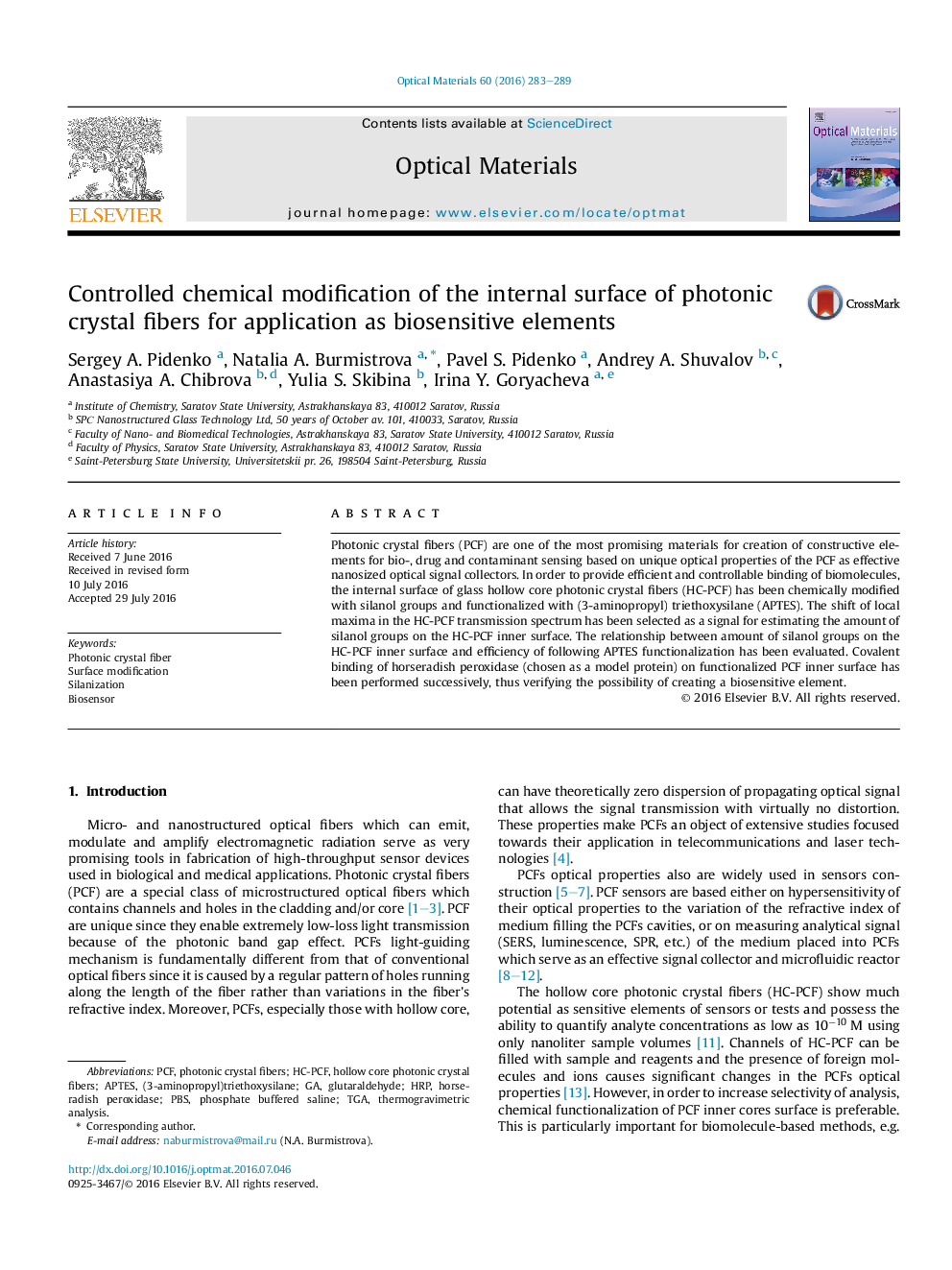| Article ID | Journal | Published Year | Pages | File Type |
|---|---|---|---|---|
| 1493221 | Optical Materials | 2016 | 7 Pages |
•Photonic crystal fibers (PCF) with hollow core were chemically functionalized and applied for biosensing.•The PCF chemical modification efficiency was evaluated by analysis of the transmission spectra local maxima shifts magnitude.•A model enzyme binding to the functionalized hollow core PCF internal surface was carried out.
Photonic crystal fibers (PCF) are one of the most promising materials for creation of constructive elements for bio-, drug and contaminant sensing based on unique optical properties of the PCF as effective nanosized optical signal collectors. In order to provide efficient and controllable binding of biomolecules, the internal surface of glass hollow core photonic crystal fibers (HC-PCF) has been chemically modified with silanol groups and functionalized with (3-aminopropyl) triethoxysilane (APTES). The shift of local maxima in the HC-PCF transmission spectrum has been selected as a signal for estimating the amount of silanol groups on the HC-PCF inner surface. The relationship between amount of silanol groups on the HC-PCF inner surface and efficiency of following APTES functionalization has been evaluated. Covalent binding of horseradish peroxidase (chosen as a model protein) on functionalized PCF inner surface has been performed successively, thus verifying the possibility of creating a biosensitive element.
Graphical abstractFigure optionsDownload full-size imageDownload high-quality image (342 K)Download as PowerPoint slide
